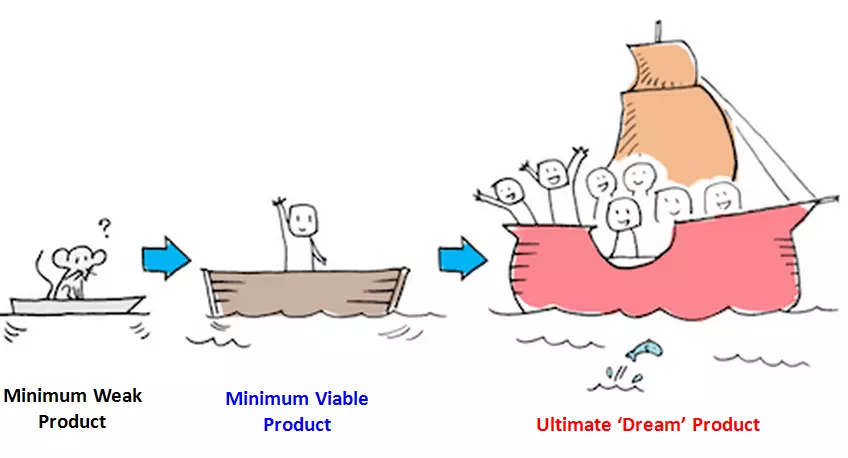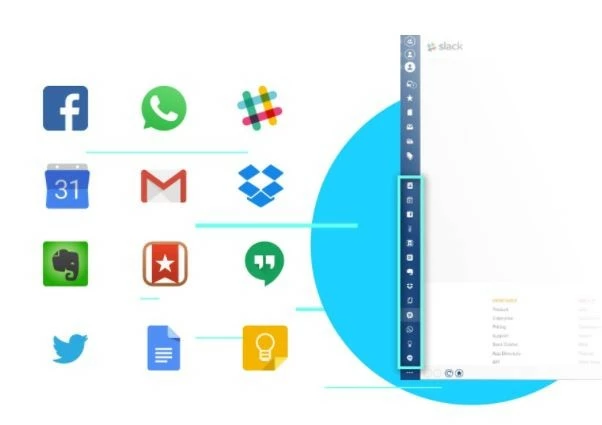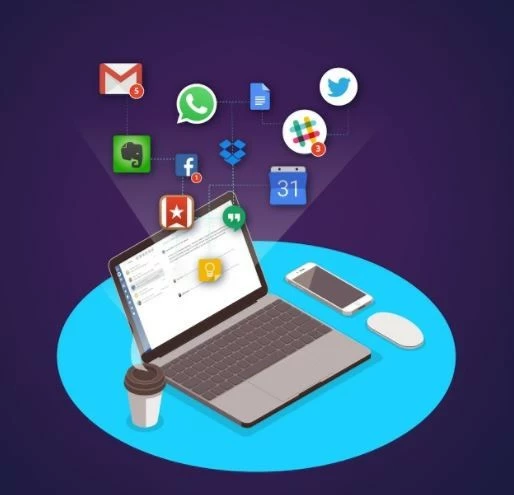Andrea Loubier – How to build an MVP in 2024

This is an interview with Andrea Loubier, CEO of Mailbird who is one of the subjects for research on MVP's within companies.
1. Why did you decide to start Mailbird?
Andrea Loubier: My cofounders and I all struggle with email management and productivity at one point or another in our professional careers. We observed a successful email client that only work for Gmail and Mac users, it was booming and was acquired by Google. So we decided to build the same for Windows, but today we are solving a bigger information management problem with an overflow of apps to manage our entire lives. So we pivoted to focusing on unifying communication on the Mailbird platform. Email is the greatest invention ever, and we wanted to be a part of a big global market in the business of information exchange and communication.
2. How many people were involved in the initial startup? What were their roles?
Andrea Loubier: 3 of us, me as the CEO, Olsen as the CTO and Michael as the CPO of Mailbird. Then we hired our first two junior developers. That was the starting team in the early days, today we are 12 people going strong.
3. Did you already know there was a market for your product, or did you have to find out? How did you go about it?
Andrea Loubier: We already knew, as we took the time to do research. There is an abundance of data about the email market online, so it was easy to validate the market for Mailbird.
4. Did you have a target market in mind? If so, what was it? Did you decide to concentrate on the whole market or a slice of it? Has that market changed since then?
Andrea Loubier: We focused on Windows + Email Productivity and we focused on the broad market within that scope for Mailbird. Technology is always changing, and yes with Email I've seen so many new things that have been tried. Some do great, some fail. Now the next big thing is artificial intelligence and unification alongside customized experiences. This is what we are constantly testing with Mailbird, which makes it very exciting!
5. How do you define the term MVP?
Andrea Loubier: It does the most basic function possible, without the bells and whistles of fancy design or smart features. For Mailbird our MVP was the ugliest, old school, basic email client that did nothing but send emails. It didn't even have a contact manager. Today, Mailbird has transformed into an incredible piece of software, and yes I am bias, but to see the transformation from 2011 to today…I am so excited about what we are capable of doing for people around the world when it comes to unifying email and apps to help them manage their work and life easily.
6. How did you decide what features were going to comprise your MVP? Whose decision was that?
Andrea Loubier: We bench marked against other email client companies to see what the core basics of email were required. We discussed these together as a team, got feedback, iterated until we had a strong foundation for the MVP to build upon with the more fancy, innovative features down the line.
7. Can you describe what you went through to create the technical environment necessary to start development?
Andrea Loubier: Our founding team consisted already of 2 technical co-founders. Our CTO had experience of managing developer teams at past companies, so we started with our internal know-how and from there set up training with each new team member on the engineering team. We recruit engineers who are familiar with the language and coding platforms while also providing documentation and training to ensure a smooth transition and environment to start development. We work with setting milestones and weekly sprints to ensure we take the time to plan, discuss, execute and communicate progress.
8. Have you discovered that anything about your first release should not have been there? What have you done about it?
Andrea Loubier: We included a Mailbird signature branding stamp on all emails that went out from Mailbird to get the word out. We had some business users who wanted it removed so we got rid of it and sought other means for building traction and getting the word out. But yeah, you learn a lot of the time when you have this idea that you think will be brilliant and you actually execute it and get the feedback, it wasn't such a good idea to begin with. A lot of times you have to analyze the execution of any new additions to when you build new software.
9. What metrics do you have in place that guide your decision-making with regard to future product features?
Andrea Loubier: We look at adoption and usage and retention of use with any new feature. We use a/b testing for a lot of these things while also not fully executing but for example putting a new action button in the Mailbird application, that doesnt actually work, but to gauge how many people click on it. If its significant enough to make a positive impact on the user experience in Mailbird, then we execute the full action. We love the lean startup methodology, to save you time so you don't waste time developing something that will do nothing for your users. Also we use Zendesk to collect feature requests, then we prioritize them based on demand, time to execute and the anticipated ROI of bringing that feature to Mailbird. Ideally we like to stick with feature requests that satisfy a need for a larger % of our Mailbird user base. As you know, you cannot build every single feature request that is asked of you. This leads to your product loosing clarity, simplicity, quality and focus.
10. Do you have a product roadmap? How far into the future does it extend? How frequently does it change?
Andrea Loubier: Yes, we create a new one every year. We've found that when you plan too far in advance, there are so many different elements and variables that will impact your roadmap like changes in the market, technical roadblocks, delays in development releases etc. We have a flexible tentative idea of the longer term, five year plan on our product roadmap, but we really focus on the current year and break it out by quarterly product development milestones with Mailbird.
Is there anything else you would like to mention that would help us in understanding the Mailbird approach to product development?
Andrea Loubier: To summarize, we like to be lean and efficient in our processes when brainstorming, analyzing, testing, iterating and finalizing with an official launch of new Mailbird product developments. For us it's important to analyze the data first before fully executing, we learned this the hard way but putting a ton of resources into development of a feature that did nothing for our users in the end. We do this while setting up weekly sprints and checkins to ensure we stick to timing and the team is all on the same page when it comes to product development expectations. Communication is so critical in what we do, if there is no communication there is no sync and all development can be off track. We care a lot about details and quality, so we take the time to do things right



